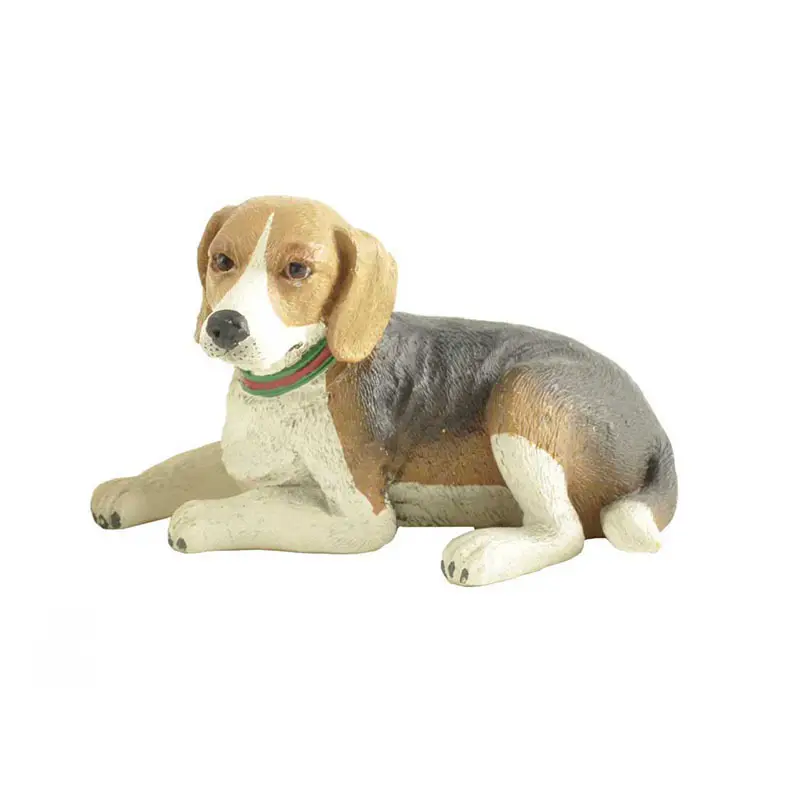How Aesthetic Appeal Affects Decorative Animal Figurines
Understanding Aesthetic Appeal in Decorative Animal Figurines
Aesthetics, the philosophical study of beauty and taste, plays a crucial role in art and design. When applied to decorative animal figurines, aesthetics encompasses the balance, harmony, and visual interest that make a piece attractive. These principles guide the creation of figurines that captivate the eye and resonate with the viewer, turning ordinary objects into works of art. Understanding the principles of aestheticssuch as proportion, color theory, and texturecan help designers create pieces that are not only visually pleasing but also emotionally engaging.
The Role of Color and Texture in Decorative Animal Figurines

Color and texture are powerful tools in enhancing the aesthetic appeal of decorative animal figurines. Through color theory, artists and designers understand how certain hues can evoke emotions and set moods. For instance, vibrant colors like red and yellow can impart energy and warmth, while cooler tones like blue and green can bring calmness and tranquility. Additionally, texture adds another layer of interest, with smooth surfaces offering elegance and rough textures providing a rustic charm. Together, these elements create figurines that are not only visually striking but also rich in meaning and emotion.
Cultural Influences on the Aesthetic Appeal of Decorative Animal Figurines
Culture significantly influences the design and aesthetic appeal of decorative animal figurines. Across the globe, different regions infuse their cultural significance into figurine designs, resulting in a rich tapestry of styles. For example, Japanese netsuke figurines often feature intricate carvings and natural motifs that reflect the country's deep appreciation for nature. In contrast, African animal figurines might emphasize bold patterns and dynamic forms, celebrating the continent's diverse wildlife and artistic heritage. These cultural nuances add depth and uniqueness to each piece, attracting collectors who appreciate the stories and traditions they represent.
The Impact of Material Choice on Aesthetic Appeal
The choice of material is another critical factor in the aesthetic appeal of decorative animal figurines. Materials such as porcelain, wood, metal, and glass each bring distinct qualities to a piece. Porcelain offers a delicate, refined look that evokes elegance and sophistication, while wood provides warmth and a natural feel that evokes simplicity and charm. Metal can introduce a contemporary edge, and glass adds an element of transparency and clarity. The material not only affects the figurine's appearance but also its perceived value and significance. For instance, gold-plated metal figurines often command higher prices due to their luxurious finish, while resin or clay figurines may appeal to those seeking a more affordable option.
Consumer Preferences and Trends in Decorative Animal Figurines
Consumer preferences and market trends play a significant role in shaping the aesthetics of decorative animal figurines. Currently, there is a growing interest in minimalistic and eco-friendly designs, reflecting broader societal trends towards sustainability and simplicity. Figurines that incorporate recycled materials or feature understated designs are becoming increasingly popular, appealing to environmentally conscious consumers. Additionally, the demand for personalized and handcrafted pieces continues to rise, as buyers seek unique items that reflect their individuality. For example, many consumers are drawn to animal figurines with unique finishes or intricate details, which offer a sense of ownership and customization.
The Psychological Effect of Aesthetics on Decorative Animal Figurines
The psychological impact of aesthetics on consumer behavior is profound. Aesthetically pleasing figurines can evoke positive emotional responses, such as joy, nostalgia, or curiosity, influencing purchasing decisions. The beauty of a figurine can trigger an emotional connection with the viewer, making it a cherished item rather than just a decorative piece. For instance, a vibrant, colorful figurine may evoke feelings of happiness and wonder, while a simple, minimalist piece may evoke feelings of calmness and reflection. Understanding these psychological effects allows designers to create figurines that resonate deeply with consumers, enhancing their overall appeal and marketability.
Embracing Aesthetic Diversity in Decorative Animal Figurines
In conclusion, the aesthetic appeal of decorative animal figurines is a complex interplay of color, texture, cultural influences, material choice, and psychological impact. These elements combine to create pieces that are not only visually stunning but also rich in meaning and emotion. As consumers continue to seek out figurines that reflect their tastes and values, embracing aesthetic diversity will remain essential in enhancing the appeal and value of these delightful objects. Whether a collector or a casual buyer, there's no denying the enchanting power of decorative animal figurines and their ability to bring beauty and joy into our lives. By understanding the principles of aesthetics and their impact on consumer behavior, designers can create figurines that stand out, capture attention, and become cherished keepsakes for years to come.
—— Contact Information
